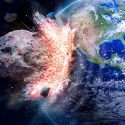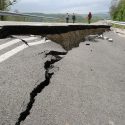From a bad hair day to a tragic natural disaster, wind can be extremely disruptive. Wind can be a formidable foe.
But what if this powerful force just didn’t exist? Would airplanes still fly? How would the weather change? What would Earth look like without it?
Mild temperatures, seed dispersal, pollination, long-awaited rain in dry regions, you can thank the wind for these things. A clear day in a polluted city? Yup, also the wind.
It also helps create our weather patterns and diverse ecosystems. Without it, Earth would be an otherworldly, alien planet. But what is wind?
I hope you’re a fan of weather, cause we’re going to blow your mind. Wind is a side effect of the uneven heating of Earth. It takes much longer for the Sun to heat the sea than land. This means that the air above the sea has a low pressure while the air above land has high pressure.
The contrast of these opposing air pressures causes diffusion to occur. Diffusion is when something with high concentration moves into something with low concentration to balance things out. It’s the same principle that causes ice to melt in your drink.
For weather, the effect causes the different air pressures to rush together, and this is what creates wind. Wind and weather patterns are also affected by the rotation of the Earth.
This is called the Coriolis effect, and it makes storms swirl clockwise in the Southern Hemisphere and counterclockwise in the Northern Hemisphere. Why?
Each day, the Earth makes one full rotation. But because of the shape of the Earth, different points move at different speeds to complete a full rotation.
The Equator is the widest part of the Earth, which means a coordinate point at the Equator has a longer distance to travel than a coordinate point in the South and North poles. And it’s a pretty large difference. Let’s take this point here, it travels 1,600 kph (1,000 mph) to complete a full rotation. But if we take a point near the poles, it only needs to travel at .00008 kph (.00005 mph) or 2 meters per second.
This is why air currents bend to the right in the Northern Hemisphere and to the left in the Southern Hemisphere.
The Coriolis effect is how wind brings warm weather from the Equator to the North and South Poles. And this is very important, because without this dispersal of temperature, we’d be in trouble.
Absent a gentle breeze or mighty gale to circulate both warm and cold weather around the Earth, the planet would become a land of extremes. Areas around the Equator would become intensely hot and the poles would freeze solid. Whole ecosystems would change, and some would completely disappear.
But it’s not just temperature the wind blows around. It also carries rain clouds. Land not directly next to bodies of water would dry up and become deserts. While land close to water would probably be very wet places, with many rainy days.
Because of these extremes, hot and cold, dry and wet, we’d see mass migration of people fleeing the uninhabitable Equator and poles to the moderate. This would cause a lot of population strain for locations like the Northern United States, Southern Canada, and Southern Europe.
If that wasn’t enough, ocean currents would be severely impacted by a lack of wind, which would further change weather patterns. Earth would look completely different.
The good news? We wouldn’t have any hurricanes. These are costly. Katrina claimed 1,200 lives in Louisiana and Mississippi in 2005, and cost the United States $125 billion.
So we may not have to budget for hurricanes anymore, but we’d still need to spend that money, or more, just to survive in a windless world. For one thing, we’d have to create massive irrigation infrastructures to transport water from rain-soaked coastal areas to sunny, but dry, farmland.
Even with irrigation, we would struggle to produce enough food and famine would spread across the globe. But don’t worry, you’d still be able to hop on a plane to travel. While planes use wind in flight, they don’t need it. Wind simply helps them get airborne faster. Without it, they’d just need to burn more fuel to reach the speeds needed for lift off.
Wind is important to our atmosphere and is often taken for granted. It’s a case of out of sight, out of mind. Not only does it provide a cool breeze during a hot day, it also creates our cherished ecosystems. No wind? There wouldn’t even be the Amazon rainforest. And since the Amazon produces 25% of the world’s oxygen, it would be bad news for us if we lost it.
Subscribe to What-If on YouTube or follow the show on Facebook Watch.
Sources
- “Ocean Currents”. National Geographic Society.
- “Wind is essential to natural processes”. Julie Crick, 2017. MSU Extension.
- “Wind Energy Could Generate Nearly 20 Percent Of World’s Electricity By 2030”. 2014. Ecowatch.
- “Weather Explained: What causes wind?”. 2014. accuweather.com
- “Hurricane Statistics Fast Facts”. CNN.
- “Explainer: Why Do Airplanes Take Off _Into_ The Wind?”. O’Neill, Sean. 2020.




























And after these things I saw four angels standing on the four corners of the earth , holding the four winds of the earth, that the wind should not blow on the earth, nor on the sea, nor on any tree. Revelation 7:1-10